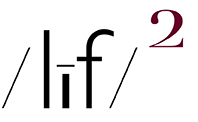(embiggenable)
(embiggenable)
(embiggenable)
RE: The Philosophy of Modern Pictures PROJECT / BOOK: now that the Happy Holiday Daze faze is nearing its end, the PoMP project/book has shifted into high gear inasmuch as it is time to get down to basics, i.e. deciding who my target audience is, so that the writing can commence with that focus in mind….
….without a doubt, the primary target audience is me. That is to write that I am undertaking the PoMP project/book to organize and clarify-all in one place-my picture making thoughts and practices-along with a heaping sample of my pictures-in the hope that it may be of some value to my secondary target audience, i.e.: those picture makers who are wandering around in the photo-making wilderness searching for a way to free their picture making minds from the confines of conventional picture making “wisdom”.
That written, let me make one thing perfectly clear, I am not trying to set myself up as a “guru” / “expert” / “authority” or even a “teacher” about anything. My intent for my writing in the project/book is to create something that is interesting, for some, to read, just as my intent in making pictures is to create something that is interesting, for some, to look at.
There will be no “how to” about any thing in the book. Rather, it is my intent to write about some of the guideposts I bumped into-in many cases on accident, by means of traveling with an open mind-in my journey through the picture making wilderness. Guideposts that just may be of some interest and/or use for fellow travelers.
RE: THE PICTURES IN THIS ENTRY: these pictures-despite their disparate referents-are identical in one respect. If you can not recognize that similarity, consider this from Robert Adams from his book Why People Photograph ~ Teaching:
…if teaching photography means bringing students to find their own individual photographic visions, I think it is impossible (ed: fyi, so do I)…the scholar’s task is relatively analytic, whereas the artist’s is synthetic; academics enjoy disassembling things in order to understand how they work, whereas artists enjoy taking scattered pieces and assembling from them things that do work.
